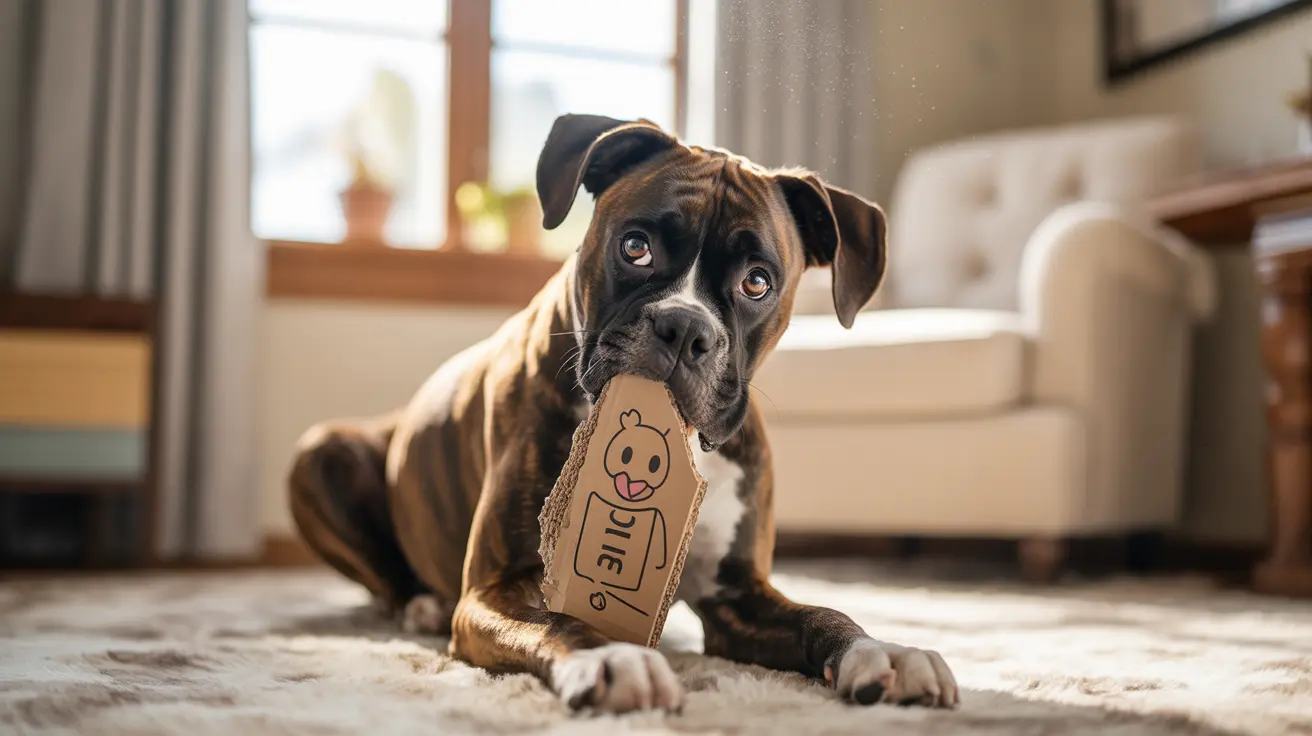Understanding Why Dogs Eat Cardboard
Dogs are naturally curious creatures that explore their environment through chewing and tasting. Several factors can lead to cardboard consumption:
- Boredom or lack of mental stimulation
- Anxiety or stress-related behaviors
- Attraction to food residue on packaging
- Natural puppy exploration
- Possible underlying conditions like pica
Immediate Steps After Your Dog Eats Cardboard
If you catch your dog in the act or discover they've eaten cardboard, take these important steps:
- Remove any remaining cardboard
- Assess how much was consumed
- Check if the cardboard contained harmful substances
- Monitor your dog's behavior closely
- Document when the incident occurred
Potential Health Risks and Complications
While small amounts of cardboard often pass through without incident, larger quantities can pose serious risks:
Minor Risks
- Mild digestive upset
- Temporary loss of appetite
- Slight lethargy
- Minor stomach discomfort
Serious Complications
- Intestinal blockage
- Choking hazards
- Perforation of digestive tract
- Severe constipation
Warning Signs to Watch For
Monitor your dog for these concerning symptoms:
- Repeated vomiting
- Lethargy or depression
- Loss of appetite
- Abdominal pain or bloating
- Difficulty defecating
- Unusual behavioral changes
When to Contact Your Veterinarian
Seek immediate veterinary attention if your dog:
- Has eaten a large amount of cardboard
- Shows signs of distress or pain
- Experiences persistent vomiting
- Hasn't had a bowel movement in 24+ hours
- Appears severely lethargic
- Shows signs of abdominal bloating
Prevention Strategies
Implement these measures to prevent future cardboard consumption:
- Keep cardboard materials out of reach
- Provide appropriate chew toys
- Ensure adequate exercise and mental stimulation
- Address any underlying anxiety issues
- Maintain regular feeding schedules
- Consider puzzle toys for mental enrichment
Frequently Asked Questions
What should I do if my dog ate a small amount of cardboard?
Monitor your dog closely for 24-48 hours. Small amounts typically pass through the digestive system without complications. Watch for signs of distress and ensure they're eating, drinking, and defecating normally.
How can I recognize signs of a dangerous blockage after my dog eats cardboard?
Watch for repeated vomiting, lethargy, loss of appetite, abdominal pain, or straining to defecate. If you notice any of these symptoms, seek immediate veterinary care as they could indicate a dangerous blockage.
Is cardboard toxic to dogs, and what risks does it pose if ingested?
Cardboard itself isn't toxic to dogs, but it can cause mechanical problems in the digestive system. The main risks include choking, intestinal blockage, and potential perforation of the digestive tract, especially with large quantities.
When should I take my dog to the vet after they've eaten cardboard?
Seek veterinary care immediately if your dog has eaten a large amount of cardboard, shows signs of distress, experiences persistent vomiting, hasn't defecated in 24 hours, or appears lethargic or in pain.
How can I prevent my dog from chewing or eating cardboard in the future?
Keep cardboard out of reach, provide appropriate chew toys, ensure adequate exercise and mental stimulation, and address any underlying anxiety issues. Consider using puzzle toys and maintaining regular feeding schedules to prevent boredom-related chewing.
Remember, while cardboard ingestion isn't always an emergency, it's better to err on the side of caution. If you're ever unsure about your dog's condition after eating cardboard, don't hesitate to contact your veterinarian for professional guidance.






